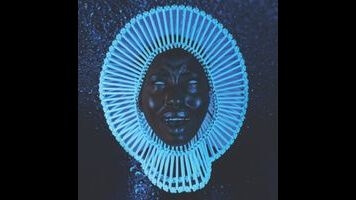Childish Gambino conjures Parliament and Prince on soulful “Awaken, My Love!”

It is hard to say whether it was always a game of chess, but if it were, Childish Gambino, a.k.a. Donald Glover, had the game plan all along. How does one go from being known as a comedian, a writer on 30 Rock, and an actor on Community to a multifaceted star in the truest sense? Take a hiatus from comedy to focus on music, appear in legitimate dramas, write a hit TV show about music, and then drop an album with relatively little rapping, instead showing flashes of Prince in the year of his death. It’s hard to tell whether the man who went on multiple late-night talk shows to tell the world his name was Dong Lover wanted to be taken seriously, but “Awaken, My Love!” proves he deserves to be.
All of the album is dipped in the chocolate of ’70s funk and soul, but virtually half of it can be chalked up to Funkadelic directly: “Have Some Love” echoes the acoustic guitar and melodic chanting of “Can You Get To That,” and while “The Night Me And Your Mama Met” isn’t as close of a direct ode to “Maggot Brain” as Mike Watt’s outright cover or John Frusciante’s total rip-off, it’s hard not to hear Eddie Hazel’s late-night heartbreak in the guitar. (The story goes that George Clinton gave the Funkadelic guitarist some acid and told him to “play like your mama just died”; Gambino’s song title choices do not appear to be coincidental.)
“Boogieman” takes the same scale as Kool And The Gang’s “Jungle Boogie,” speeds it up, and twists it around. While its shouts are reminiscent of Clinton’s deep-fried funk acting on “March To The Witch’s Castle,” the riffs sound like “Cosmic Slop,” and the ass-busting groove of synth bass is the most dance-worthy thing to come out of Atlanta since Outkast’s “Dracula’s Wedding.” When the album isn’t honoring Funkadelic, it’s jamming out to early Sly & The Family Stone—not the laid-back work, but the roar of There’s A Riot Goin’ On without the political weight, as seen on “Baby Boy.” These reference-heavy song titles don’t feel like calculated, calcified tributes, but like a user-friendly guide to what the stylistic building blocks were.
